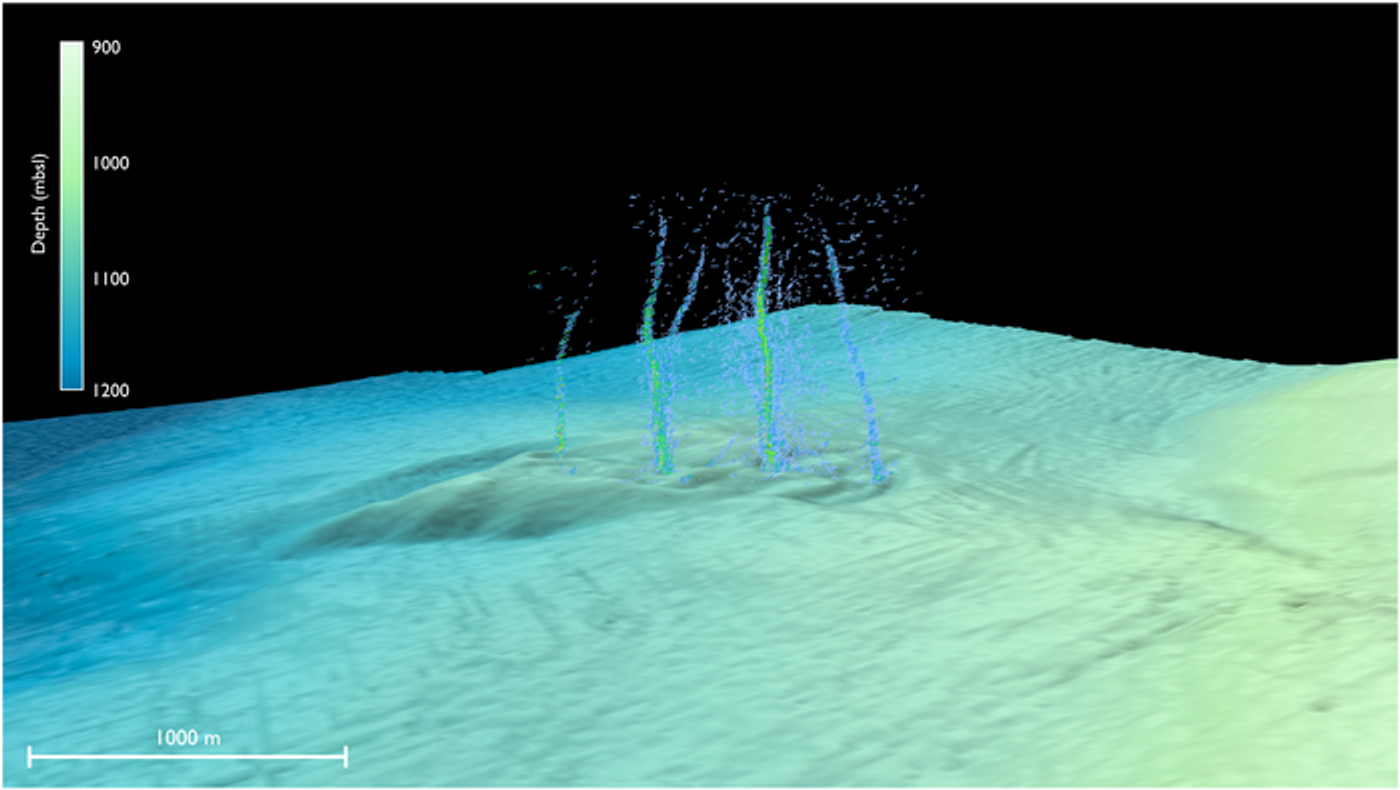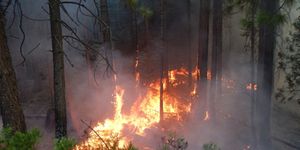Deep Ocean Spring Could Be Regulating Stress of Offshore Fault
In a recent study published in Science Advances, a team of researchers analyzed an underwater spring known as Pythia’s Oasis that is discharging water 50 miles off the coast of Newport, Oregon. This spring originates 2.5 miles underneath the seafloor on a plate boundary and regulates stress on the Cascadia Subduction Zone, which is a (presently) quiet fault that is hypothesized to hold the power to release an earthquake as strong as 9.0 on the Richter scale.
Sonar image of the Pythias Oasis site displaying bubbles rising from the seafloor approximately two-thirds of a mile deep and 50 miles off the coast of Newport, Oregon. (Credit: Philip et al./Science Advances)
Like countless scientific discoveries in the past, this one was almost accidental. In this case, the researchers were aboard the RV Thomas G. Thompson experiencing a water-related delay when bubble plumes were unexpectedly detected by the ship’s sonar emanating from three-quarters of a mile underneath the surface of the ocean. It wasn’t until the team deployed an underwater robot that they discovered the bubbles were just the precursor to a much larger volume of water originating from the seafloor.
“They explored in that direction and what they saw was not just methane bubbles, but water coming out of the seafloor like a firehose. That’s something that I’ve never seen, and to my knowledge has not been observed before,” said Dr. Evan Solomon, who is an associate professor of oceanography at the University of Washington (UW), and a co-author on the study.
This first encounter with the underwater phenomenon was observed by first author, Dr. Brendan Philip, who is currently a White House policy advisor but conducted the research while a graduate student at UW. These findings were later confirmed by additional observations as coming from the Cascadia megathrust with estimated temperatures between 300 to 500 degrees Fahrenheit. What makes this discovery important is that the escaping water reduces the fluid pressure between sediment particles and increases friction between the two competing tectonic plates.
“The megathrust fault zone is like an air hockey table,” Solomon said. “If the fluid pressure is high, it’s like the air is turned on, meaning there’s less friction and the two plates can slip. If the fluid pressure is lower, the two plates will lock – that’s when stress can build up.”
Dr. Solomon compares the release of fluid from the fault zone is equivalent to leaking lubricant. A reduction in lubricant could result in producing a powerful earthquake. Dr. Solomon also stated this is the first known site of its kind. He added that while similar sites could exist close by, but detection from the ocean’s surface is difficult.
This fluid leak could help explain why the northern part of the Cascadia Subduction Zone is locked harder than the southern part of the same zone.
“Pythias Oasis provides a rare window into processes acting deep in the seafloor, and its chemistry suggests this fluid comes from near the plate boundary,” said Dr. Deborah Kelley, who is a professor of oceanography at UW, and a co-author on the study. “This suggests that the nearby faults regulate fluid pressure and megathrust slip behavior along the central Cascadia Subduction Zone.”
Dr. Solomon just returned from studying the Hikurangi Subduction Zone off the coast of New Zealand. While this zone has the same tectonic forces at play, the key difference is it experiences smaller and more frequent earthquakes, which makes it easier to analyze. Another difference is the sub-seafloor structure, which means less likelihood of possessing leaks like Cascadia, Dr. Solomon said.
Will Cascadia blow its top and produce a 9.0-magnitude earthquake, and what new discoveries will scientists make about tectonic plates and earthquake zones in the coming years and decades? Only time will tell, and this is why we science!
Sources: Science Advances, OOI Regional Cabled Array, University of Washington
As always, keep doing science & keep looking up!









